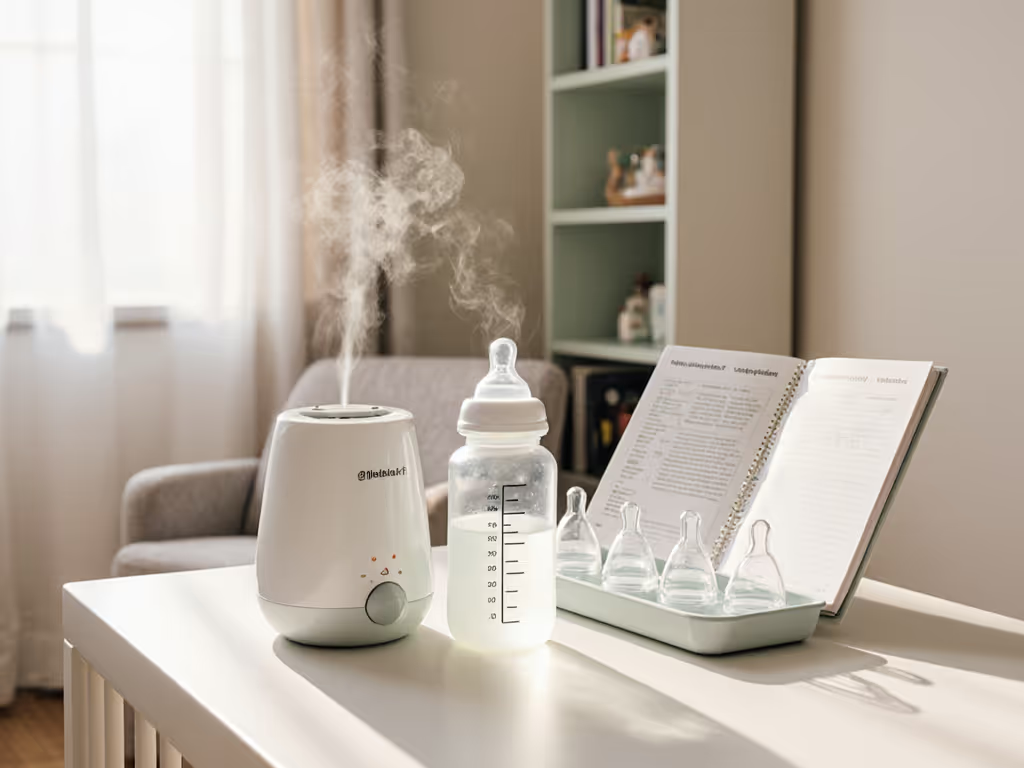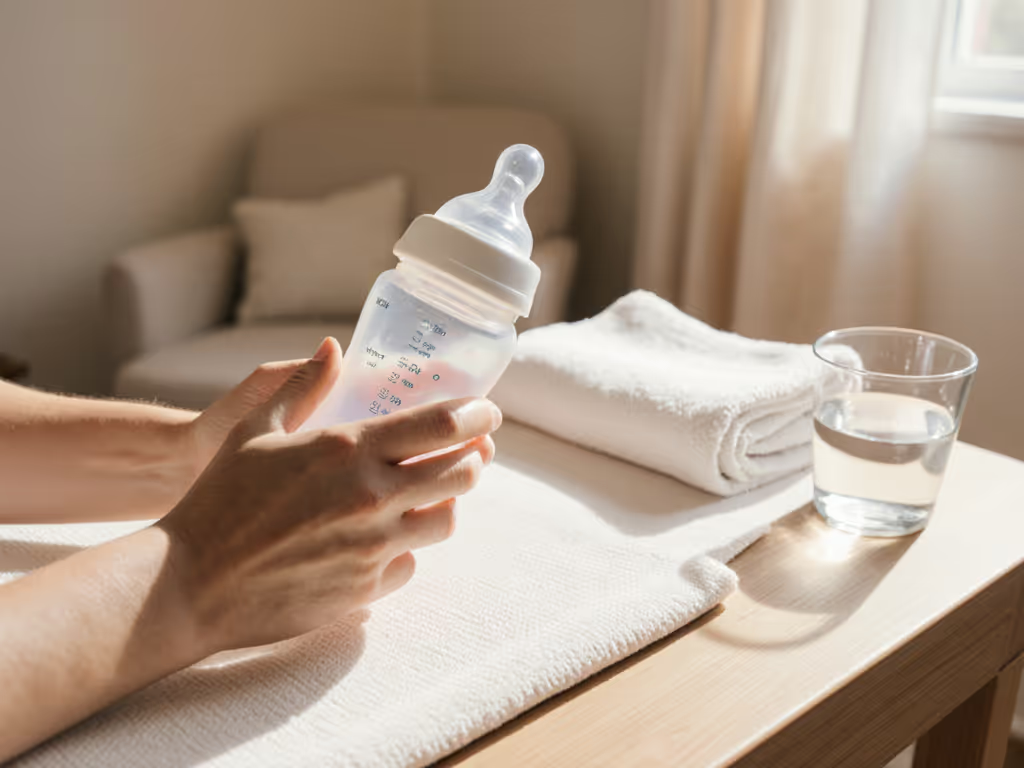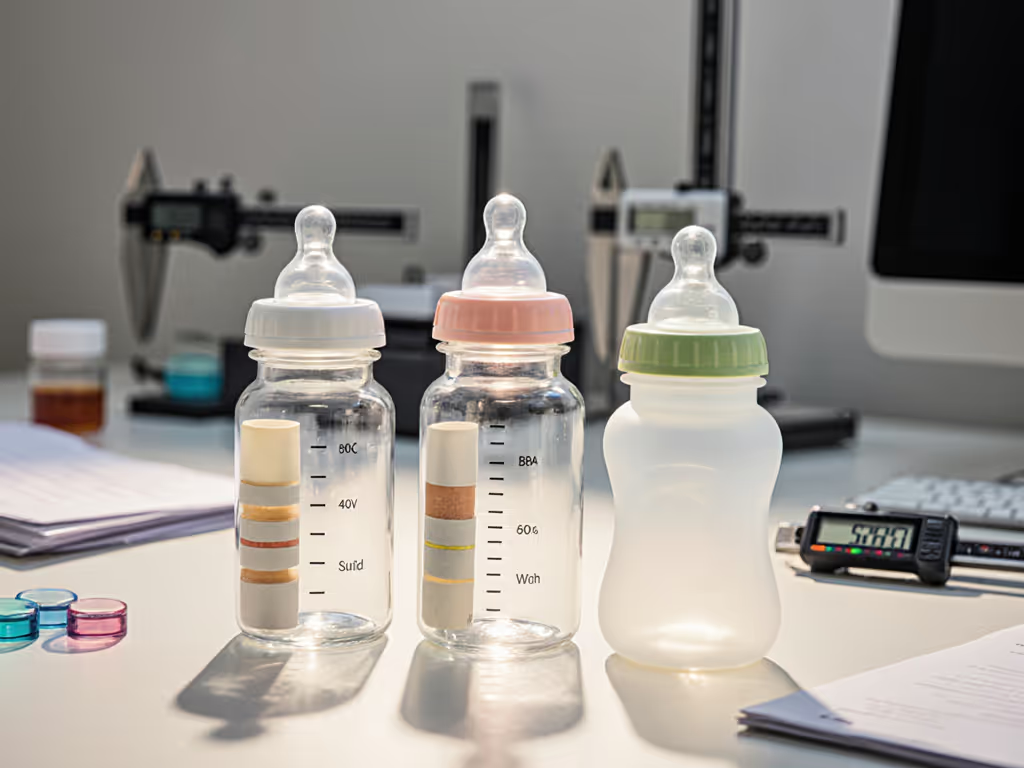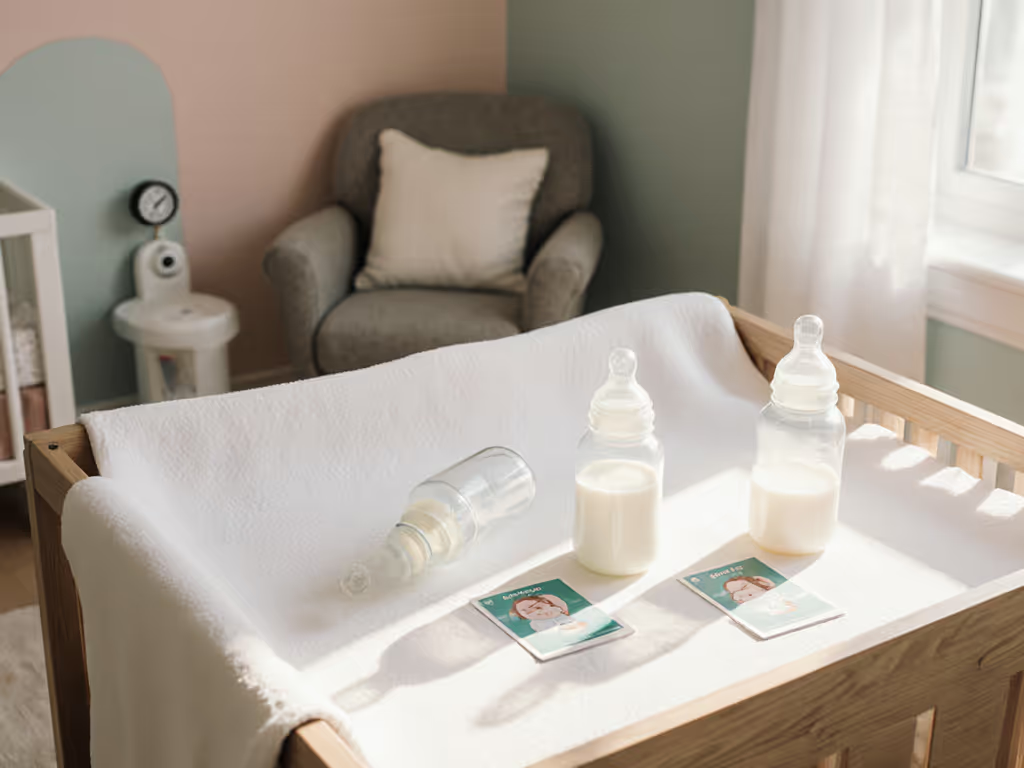
Practical Baby Bottle Tips for Calm and Safe Feeding Success

Did you know that nearly 70 percent of parents say finding the right bottle for their baby feels overwhelming? Choosing the right feeding routine supports your baby's comfort and growth while reducing common struggles like fussiness or gas. With so many bottle options and feeding techniques, understanding what works best for your little one can make all the difference in creating stress free and nourishing meal times.
Quick Summary
| Key Point | Explanation |
|---|---|
| 1. Assess Your Baby's Feeding Needs | Observe your baby to understand their feeding style and preferences, noting signals of comfort and discomfort. |
| 2. Choose Suitable Bottle Components | Select nipple flow rates and materials that align with your baby's developmental stage for a comfortable feeding experience. |
| 3. Prepare Bottles with Care | Follow hygiene protocols and sterilize bottles correctly to ensure safe feeding and prevent contamination. |
| 4. Test Bottle Fit at Home | Create a calm environment to assess your baby’s comfort with different bottle types and adjust as necessary for their preferences. |
| 5. Monitor Feeding Sessions Closely | Document observations during feedings to identify patterns and make timely adjustments for improved feeding experiences. |
Step 1: Assess Your Baby's Feeding Style and Needs
Discovering your baby's unique feeding style is like solving a delightful puzzle that helps you create smoother feeding experiences. This assessment helps you understand your little one's preferences and potential challenges before selecting bottles or feeding techniques.
Start by observing your baby during feeding sessions. Watch for subtle signals that reveal their comfort level and eating patterns. Are they relaxed and content? Do they seem frustrated or struggle while drinking? Look for physical cues like turning away, arching their back, or showing signs of gas after feeding.
Tracking feeding behaviors provides critical insights. Note how quickly or slowly they drink, whether they prefer smaller or larger volumes, and if they seem easily overwhelmed. Some babies prefer shorter but more frequent feeds while others want longer sessions with fewer interruptions. Keeping a simple feeding log can help you spot patterns.
Consider your baby's age and developmental stage when assessing feeding needs. Newborns typically require different nipple flows and bottle designs compared to older infants. Premature babies might need specialized feeding approaches that support their unique nutritional requirements.
Watch for signs of potential feeding challenges like:
- Frequent spit up
- Excessive gas
- Difficulty latching
- Consistent fussiness during feeds
- Slow weight gain
If you notice persistent issues, consulting your pediatrician can help rule out underlying concerns and provide personalized guidance.
 Every baby is wonderfully unique.
Every baby is wonderfully unique.
By understanding your baby's specific feeding style, you'll be better equipped to choose bottles and techniques that support their comfort and nutrition. The next step involves matching these observations with the right feeding gear.
Step 2: Select Compatible Bottle Components for Optimal Flow
Choosing the right bottle components is a critical step in creating a comfortable and efficient feeding experience for your baby. This process involves carefully matching nipple flow, bottle design, and material to your baby's unique feeding style and developmental needs.
The World Health Organization emphasizes the importance of safe feeding practices. Start by examining nipple flow rates that match your baby's age and sucking strength. Newborns require slower flow rates to prevent overwhelming them, while older infants need faster flows that support their growing nutritional demands.
Consider the bottle material carefully. Medical grade silicone and BPA free plastics offer safe options that prevent potential chemical leaching. Look for bottles with smooth interior surfaces that minimize bacterial buildup and support easy cleaning.
Nipple design plays a crucial role in preventing common feeding challenges. Anti colic vents help reduce air intake which can cause gas and discomfort. Wide neck nipples often mimic breastfeeding patterns and can help babies transition more smoothly between breast and bottle feeding.
Watch for these key compatibility indicators:
- Smooth nipple transition
- Minimal air bubbles during feeding
- Consistent liquid flow
- Baby's comfort and ease of drinking
- No leakage or spillage
If your baby shows signs of nipple confusion or feeding frustration, do not hesitate to experiment with different bottle component configurations. What works for one infant might not work perfectly for another.
By thoughtfully selecting compatible bottle components aligned with your baby's developmental stage, you create a foundation for stress free and nutritious feeding sessions. Your next step involves testing and fine tuning your chosen bottle system.
Step 3: Prepare Bottles Safely and Assemble Correctly
Mastering safe bottle preparation is your key to providing healthy and hygienic feeding experiences for your baby. This critical process involves more than just mixing formula or warming milk it requires precision and attention to detail.
The World Health Organization strongly emphasizes hygiene in food preparation. Begin by thoroughly washing your hands with soap and warm water. Clean all work surfaces and gather your sterilization equipment like a dedicated bottle brush, sterilizer, and clean towels.
Sterilize all bottle components before first use and between each feeding session. Boil glass or metal components for five minutes or use an electric steam sterilizer for consistent results. Plastic bottles require careful handling to prevent potential chemical breakdown during high temperature treatments.
Assemble your bottles methodically. Check each component for cracks or wear before connecting. Ensure nipples are securely fastened and venting systems are correctly positioned. Improper assembly can lead to air intake and potential discomfort for your baby.
Follow these key safety guidelines:
- Always use fresh water
- Check formula measurement instructions carefully
- Use room temperature water for mixing
- Never reuse prepared formula
- Store prepared bottles in refrigerator immediately if not used
Pay special attention to formula preparation. Measure powder precisely using the manufacturers recommended scoop. Uneven measurements can impact nutritional balance and potentially cause digestive issues.
Temperature matters. Warm bottles to body temperature by using a bottle warmer or placing in warm water. Test temperature by placing a few drops on your inner wrist always avoid overheating.
By establishing a consistent and careful bottle preparation routine you create a safe feeding environment that supports your babys health and nutrition.
 Your next step involves learning proper feeding techniques that complement these preparation methods.
Your next step involves learning proper feeding techniques that complement these preparation methods.
Step 4: Test Bottle Fit and Feeding Comfort at Home
Testing your baby's bottle fit and feeding comfort is a nuanced process that requires patience and careful observation. The Neonatal Eating Assessment Tool suggests creating an environment where your infant can communicate their feeding preferences and physiological comfort.
Start with a calm feeding environment. Choose a quiet space where you can focus entirely on your baby's reactions. Hold your baby in a semi upright position that supports natural breathing and swallowing. Watch their facial expressions and body language closely for signs of comfort or distress.
The FEND standards recommend observing your baby's self regulation during feeding. Look for consistent indicators like steady sucking rhythms, relaxed muscles and minimal squirming. Babies who are comfortable with their bottle will typically maintain good eye contact and appear content throughout the feeding session.
Pay attention to these specific comfort markers:
- Smooth and consistent swallowing
- Relaxed facial muscles
- No excessive arching or turning away
- Steady breathing patterns
- Minimal air intake or gurgling sounds
Track your baby's feeding performance across multiple sessions. Some bottles might work perfectly one day and cause discomfort the next. Babies developmental stages change rapidly so remain flexible in your approach.
If your baby shows persistent signs of discomfort like excessive gas frequent spit up or apparent frustration during feeding do not hesitate to adjust your bottle components. Small modifications in nipple flow angle or bottle design can dramatically improve feeding experiences.
Consider keeping a simple feeding journal to document your observations. Note the bottle type nipple flow and your baby's reactions. This systematic approach helps you identify patterns and make informed decisions about future bottle selections.

By methodically testing and adapting your bottle fit you create a personalized feeding strategy that supports your babys nutritional and comfort needs. Your next step involves fine tuning your feeding technique based on these observations.
Step 5: Monitor Feeding Sessions and Adjust Techniques
Effective feeding management requires consistent observation and responsive adaptation to your baby's evolving needs. Research from the 'Nutrients' journal emphasizes the critical role of caregiver attentiveness in establishing healthy infant feeding practices.
Establish a systematic monitoring approach during each feeding session. Position yourself comfortably where you can observe your baby's entire body language and facial expressions. Watch for subtle cues that indicate comfort levels satisfaction or potential feeding challenges.
The FEND standards recommend tracking multiple physiological and behavioral indicators during feeding. Pay close attention to breathing patterns muscle tension swallowing rhythms and overall body positioning. Babies communicate their feeding experiences through intricate signals that require careful interpretation.
Document key observation points during each feeding:
- Sucking consistency
- Total feeding duration
- Milk or formula intake volume
- Pausing frequencies
- Post feeding behaviors
Recognize that feeding techniques are not static but dynamic processes requiring continuous refinement. What works perfectly today might need adjustment next week as your baby grows and develops. Flexibility becomes your greatest asset in creating positive feeding experiences.
Be prepared to make real time adjustments. If your baby shows signs of discomfort like turning away excessive crying or struggling with nipple flow immediately pause and reassess your technique. Small modifications in angle holding position or bottle component can transform a challenging feeding session.
Consider creating a simple tracking system. A dedicated notebook or digital app can help you record observations identify patterns and communicate effectively with pediatric healthcare providers. Consistent documentation transforms random feeding sessions into valuable developmental insights.
By developing a responsive and attentive feeding approach you create a nurturing environment that supports your babys nutritional and emotional well being. Your next step involves integrating these techniques into a consistent feeding routine.
Here's a summary of how each step supports successful bottle feeding:
| Step | Key Focus | Main Actions |
|---|---|---|
| Assess Baby's Feeding Style | Understand preferences<br>Identify challenges | Observe cues<br>Track feeding patterns |
| Select Bottle Components | Match bottle to needs<br>Support comfort | Choose flow rate<br>Pick material & design |
| Prepare & Assemble Safely | Ensure hygiene<br>Avoid contamination | Wash & sterilize<br>Follow prep guides |
| Test Fit & Comfort | Find optimal match<br>Monitor reactions | Try bottle types<br>Watch baby cues |
| Monitor & Adjust Techniques | Stay responsive<br>Promote well-being | Document sessions<br>Adapt methods as needed |
Achieve Calm and Safe Feeding with Customized Bottle Solutions
Navigating your baby's unique feeding style and overcoming challenges like nipple confusion, gas, or feeding refusal can feel overwhelming. This article highlights the importance of understanding your baby's cues and selecting the right nipple flow, bottle material, and design to support comfortable and worry-free feeding sessions. If you want to move beyond trial and error and create a personalized feeding experience that truly fits your baby's needs, help is at hand.
Discover expert guidance and practical tools to match bottle components precisely with your baby's feeding preferences on Family Bottle Fit. Learn how to identify the best combinations for flow, venting, and safety while accessing step-by-step tips for preparing and assembling bottles hygienically. Don't let feeding frustration take over your routine. Take control today and explore our in-depth resources designed specifically to empower parents seeking calm, confident, and safe feeding moments. Visit Practical Baby Bottle Tips now and find the perfect solution tailored to your baby's wellbeing.
Frequently Asked Questions
How can I assess my baby's feeding style before choosing a bottle?
Understanding your baby's feeding style involves observing their comfort levels during feeding sessions. Watch for cues like relaxation, frustration, or physical signals such as turning away or gurgling sounds. Track these observations in a simple log to identify patterns over 3–5 days.
What bottle components should I select for optimal feeding flow?
To ensure an optimal feeding experience, choose nipple flow rates that match your baby's age and sucking strength. For newborns, use slower flow rates, while older infants may require faster flows. Test different combinations of nipple designs and bottle shapes to find what best suits your baby's comfort within a week or two.
What safety measures should I follow when preparing baby bottles?
Always start by washing your hands and sterilizing all bottle components before first use and between feedings. Use boiling water for glass components or an electric steam sterilizer; ensure you follow correct measurements for formula mixing. This routine can help maintain a hygienic feeding environment every time.
How can I effectively test my baby's bottle fit and feeding comfort?
To test bottle fit, create a calm feeding environment and observe your baby's reactions closely. Hold them in a semi-upright position and watch for signs of comfort or distress during feeding. Record your observations across multiple sessions to refine your bottle choices based on their needs over time.
What techniques should I use to monitor and adjust feeding sessions?
Establish a consistent monitoring approach by observing your baby’s body language and signals during each feeding. Document indicators like sucking consistency and post-feeding behaviors, making adjustments as needed based on their reactions. This attentive practice can significantly improve your baby's comfort and feeding success over time.
Related Articles


Why Slow Flow Nipples Matter: Complete Guide

Step-by-Step Guide to Preventing Nipple Confusion Easily

Complete Guide to the Role of Bottle Construction

